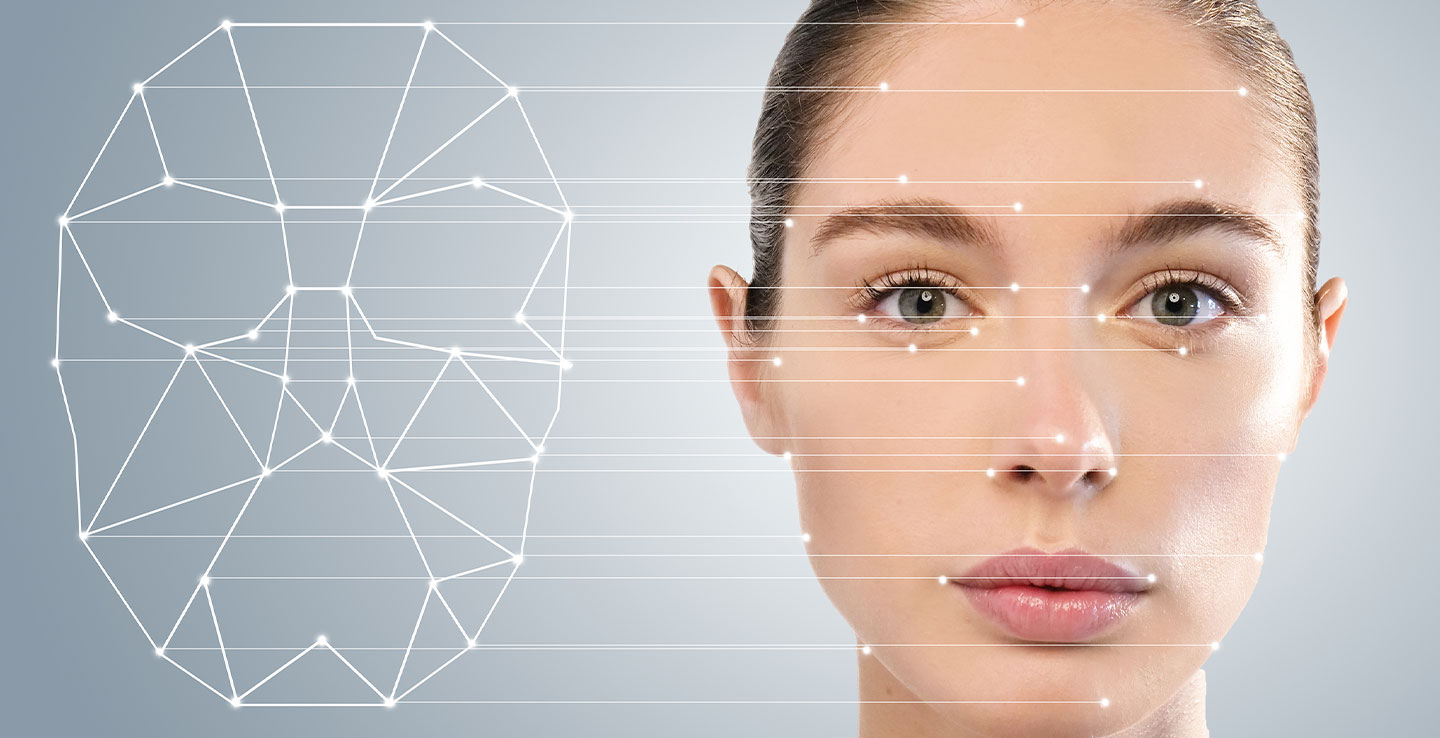Beauty and the brain: How the nervous system shapes neurocosmetic innovations
KELLY A. DOBOS
Consultant Cosmetic Chemist, Cincinnati, Ohio, United States
ABSTRACT:Neurocosmetics, a field that combines cosmetic sciences with neuroscience, is gaining momentum in the beauty industry. It focuses on the skin-brain connection and how skincare products can influence the nervous system. By modulating neurotransmitters and enhancing sensory perception, neurocosmetics aim to improve skin health and beauty. This emerging discipline is expected to lead to the development of more effective and innovative skincare products, as scientists continue to explore new ingredients and formulations to unlock its full potential. This article discusses the basic aspects of the nervous system in the skin and ingredients with potential application in this category.
Introduction
The prefix “neuro-” has origins in Greek language and is used to created compound words indicating something is of a nerve, nerves, or the nervous system. The nervous system is the major controlling, regulatory, and communications system in the body. It is responsible for everything from simple reflexes to complex thoughts and emotions.
The concept of neurocosmetics has been developing since the turn of the 21st century and takes a holistic approach to skin health and beauty by leveraging the relationship between the skin, the nervous system, and the brain.

THE NERVOUS SYSTEM AND THE SKIN
The skin is the largest organ of the human body, accounting for about 15 percent of total body weight and covering an impressive 1.5 to 2 m2 of surface area (1, 2). As the body’s largest organ the skin performs many important functions. It acts as a protective barrier against mechanical, thermal, and physical injury, as well as hazardous substances. The skin also helps regulate body temperature, prevents dehydration, and reduces the harmful effects of UV radiation. Additionally, it serves as a sensory organ, allowing the body to detect sensations of touch, temperature, and pain (3).
The peripheral nervous system (PNS) in the skin is responsible for transmitting sensory information from the skin to the central nervous system (CNS) and carrying motor commands from the CNS to the muscles. The PNS consists of sensory and motor nerves that branch out from the spinal cord and extend to the skin. The sensory nerves in the skin are involved in transmitting information about touch, pressure, temperature, and pain to the brain, allowing us to perceive and respond to our environment. Motor nerves enable the brain to control muscle movements and other functions in response to sensory information. The PNS also plays a role in regulating involuntary processes like sweating and piloerection (contraction of small muscles at the base of hair follicles that is commonly referred to as goosebumps) which are important for maintaining homeostasis. (4)
THE SKIN’S SENSORY RECEPTORS
The skin is equipped with various sensory receptors that enable the perception of different stimuli. These receptors are densely concentrated in the skin and play a crucial role in sensory perception and protective mechanisms. Sensory receptors are classified into five primary categories: mechanoreceptors, thermoreceptors, proprioceptors, pain receptors, and chemoreceptors (5,6).
- Mechanoreceptors: These receptors perceive mechanical stimuli such as pressure, vibrations, and texture.
- Thermoreceptors: These receptors respond to changes in temperature, allowing us to perceive hot and cold sensations.
- Pain receptors (Nociceptors): Nociceptors detect tissue damage or potentially harmful stimuli, signaling the perception of pain.
- Proprioceptors: These receptors are found in muscles, tendons, and joints, providing information about body position, movement, and balance.
- Chemoreceptors: While not as prevalent in the skin, chemoreceptors detect chemical stimuli, such as those involved in the sense of smell.
NEUROCOSMETICS
Topically applied neurocosmetics work by activating or inhibiting the skin's neuroreceptors or by modulating neurotransmitters where they facilitate faster and more effective communication. Additionally, neurocosmetics approaches can enhance organoleptic properties of a cosmetic, providing a unique and pleasurable experience with product application. It is important to keep in mind that many claims associated with neurocosmetic activity imply drug activity and are subject to regulatory scrutiny. Careful review and compliance with regulations in markets of interest is strongly advised.
SENSATES
Sensates in cosmetics are compounds that provide physiological effects such as cooling, warming, or tingling when applied to the skin and can be used to enhance the sensory experience of using cosmetic products. Warming and cooling sensates work by activating different Transient Receptor Potential (TRP) channels. Transient Receptor Potential (TRP) channels are a group of ion channels that are expressed in various cell types, including those found in the skin. They mediate the influx of monovalent and/or divalent cations into cells. Their activation and modulation contribute to sensations of temperature, pain, and itch in the skin (7).
TRPM8 was the first cold-activated ion channel to be identified and that discovery established the general role for TRP ion channels in temperature sensation. It is activated by cold temperatures and cooling compounds, such as menthol (7, 8, 9, 10). The activation of TRPM8 by cold or cooling compounds leads to the inhibition of itch and the alleviation of pain caused by various stimuli. (7,8,9). Cooling sensations can also enhance perception of hydration and cleansing by creating a refreshing feel, or be used as a signal of product efficacy. Additional examples of cooling sensates include menthyl lactate, menthone glycerin acetal, and menthyl ethylamido oxalate (9, 11).
Vanillyl Butyl Ether (VBE) produces a warming sensation in the skin by activating the transient receptor potential vanilloid-1 (TRPV1) channel and inducing vasodilation. This increase in blood flow leads to a gentle warming effect on the skin. VBE is known for its milder and long-lasting warming properties compared to traditional warming agents like capsicum and ginger extracts (7,9,12).
The challenge in using senates is that all can produce some irritation along with the cooling or warming response. Different parts of the body vary significantly in their inherent sensitivity and sensory response depending on the localized concentration of TRPs. The concentration of sensate and how fast the material penetrates the skin, influenced both by molecular structure and properties of the cosmetic vehicle, can significantly impact tolerability.
COUNTERIRRITANTS
Over-the-counter (OTC) approved topical analgesics containing counterirritants are utilized as a form of pain management. Counterirritants include salicylates, along with capsaicin, menthol, and camphor. Mechanisms of action for these topical treatments include interactions with nociceptive neural networks in the outer layers of the skin through various inflammatory processes. Hence, the term counterirritant indicates the treatment temporarily masks a more intense pain by producing a separate sensation of discomfort as a distraction (13).
Capsaicin works through multiple mechanisms including interaction with TVRP1 channels and depletion the levels of substance P, a neurotransmitter associated with pain, from sensory neurons, resulting in pain relief (10). Methyl salicylate and menthol produce a sensation of cold on the skin. While generally considered safe when used according to product labeling, these medications can also be associated with adverse effects (13).
NEUROPEPTIDES
Neuropeptides play a crucial role in the nervous system, acting as signaling molecules that modulate a wide range of physiological functions. They are widely distributed throughout the central and peripheral nervous systems, where they function as complementary signals to classic neurotransmitters, fine-tuning neurotransmission and controlling the balance between excitation and inhibition. Additionally, neuropeptides have been implicated in neuroprotection, immunomodulation, and the regulation of autophagy (14, 15).
Neuropeptides are also synthesized locally in keratinocytes and endothelial cells, and then transported by nerve fibers or immune cells. Neuropeptides released by sensory nerves that innervate the skin can also directly modulate the functions of keratinocytes, Langerhans cells, and mast cells (16,18). Their diverse roles make them key players in the regulation of physiological homeostasis.
Targeting neuropeptide-degrading enzymes has been suggested as a potential therapeutic strategy for the treatment of inflammatory skin diseases as neuropeptides are known to participate in the complex network of mediators that regulate cutaneous inflammation, hyperproliferation, and wound healing (16,18,19). Additionally, the "brain-skin" connection has been observed between chronic stress and chronic inflammatory skin diseases, indicating a potential role for psychological interventions in managing these conditions as well (20, 21).
Nerve growth factor (NGF) is an endogenous neuropeptide that plays a critical role in the growth, development, differentiation, and survival of central and peripheral neurons. NGF also has been implicated in various biological processes, such as tissue healing and the regulation of the immune system but it becomes depleted with age leaving fragile neurons vulnerable (22). Ingredients such as glutamylamidoethyl indole and pyroglutamylamidoethyl indole have demonstrated NGF-like neuroprotective properties and skin care benefits (23, 24).
CONCLUSIONS
The emerging field of neurocosmetics unveils the intricate relationship between the brain and the skin. The concept that certain topical ingredients have the power to elicit specific sensations, emotions, and neurological responses opens new frontiers in beauty and well-being. While the potential of neurocosmetics is promising, it's essential to approach this innovative category with a balanced and scientific perspective.
References and notes
Kanitakis J. Anatomy, histology and immunohistochemistry of normal human skin. European journal of dermatology. 2002;12(4):390-401. https://pubmed.ncbi.nlm.nih.gov/12095893/
Martini FH, Nath JL, Bartholomew EF. Fundamentals of anatomy & physiology 9th ed. San Francisco (AS) Publishing as Pearson Benjamin Cummings. 2009.
Wickett RR, Visscher MO. Structure and function of the epidermal barrier. American journal of infection control. 2006;34(10):S98-S110.
Lanigan LG, Russell DS, Woolard KD, Pardo ID, Godfrey V, Jortner BS, et al. Comparative pathology of the peripheral nervous system. Veterinary Pathology. 2021;58(1):10-33.
Birder LA, Perl ER. Cutaneous sensory receptors. Journal of clinical neurophysiology. 1994;11(6):534-52.
Winkelmann RK. Sensory receptors of the skin. Spinal afferent processing: Springer; 1986. p. 19-57.
Caterina MJ, Pang Z. TRP channels in skin biology and pathophysiology. Pharmaceuticals. 2016;9(4):77.
McKemy DD. TRPM8: the cold and menthol receptor. TRP ion channel function in sensory transduction and cellular signaling cascades. 2007. https://pubmed.ncbi.nlm.nih.gov/21204486/
Leffingwell JC. 65 Cooling Ingredients and Their Mechanism of Action. Cosmetic Science and Technology. 2009:661.
Jordt S-E, McKemy DD, Julius D. Lessons from peppers and peppermint: the molecular logic of thermosensation. Current opinion in neurobiology. 2003;13(4):487-92.
Watson H, Hems R, Rowsell D, Spring D. New compounds with the menthol cooling effect. J Soc Cosmet Chem. 1978;29(4):185-200.
CHEN L-C, WU S-J, HUANG C. Vanillyl butyl ether to topically induce blood cell flux, warming sensation. Cosmetics and toiletries. 2010;125(12).
Lisi D. OTC Transdermal analgesic patches in pain management. US Pharm. 2019;44(3):15-21.
Russo AF. Overview of Neuropeptides: Awakening the Senses? Headache. 2017;57 Suppl 2(Suppl 2):37-46.
Catalani E, De Palma C, Perrotta C, Cervia D. Current Evidence for a Role of Neuropeptides in the Regulation of Autophagy. Biomed Res Int. 2017;2017:5856071. https://www.ncbi.nlm.nih.gov/pmc/articles/PMC5448050/
Lotti T, Hautmann G, Panconesi E. Neuropeptides in skin. Journal of the American Academy of Dermatology. 1995;33(3):482-96.
Elewa R, Makrantonaki E, Zouboulis CC. Neuropeptides and skin aging. Hormone Molecular Biology and Clinical Investigation. 2013;16(1):29-33.
Scholzen T, Armstrong CA, Bunnett NW, Luger TA, Olerud JE, Ansel JC. Neuropeptides in the skin: interactions between the neuroendocrine and the skin immune systems. Exp Dermatol. 1998;7(2-3):81-96. https://pubmed.ncbi.nlm.nih.gov/9583747/
Mehta D, Granstein RD. Immunoregulatory Effects of Neuropeptides on Endothelial Cells: Relevance to Dermatological Disorders. Dermatology. 2019;235(3):175-86. https://pubmed.ncbi.nlm.nih.gov/30808842/
Keller JJ. Cutaneous neuropeptides: the missing link between psychological stress and chronic inflammatory skin disease? Archives of Dermatological Research. 2023:1-7. https://pubmed.ncbi.nlm.nih.gov/36700961/
Zhang Y, Zhang H, Jiang B, Yan S, Lu J. A promising therapeutic target for psoriasis: Neuropeptides in human skin. International Immunopharmacology. 2020;87:106755. https://pubmed.ncbi.nlm.nih.gov/32736190/
Aloe L, Rocco ML, Balzamino BO, Micera A. Nerve Growth Factor: A Focus on Neuroscience and Therapy. Curr Neuropharmacol. 2015;13(3):294-303. https://pubmed.ncbi.nlm.nih.gov/26411962/
Kang C, Lim H, Kim J, Cho S, Kim J, Park N, et al. Anti-aging cosmetic composition containing glutamylamidoethyl indole. KR Patent 20100058858. 2010.
Prouheze P, Morand B, Nicolaÿ J-F, Fréchet M. Preservation of Sympathetic Neuron-Adipocyte Crosstalk May Limit Chronic Emotional Stress-Mediated Fat Accu-mulation. IFSCC Mag. 2014;17:17-21.

